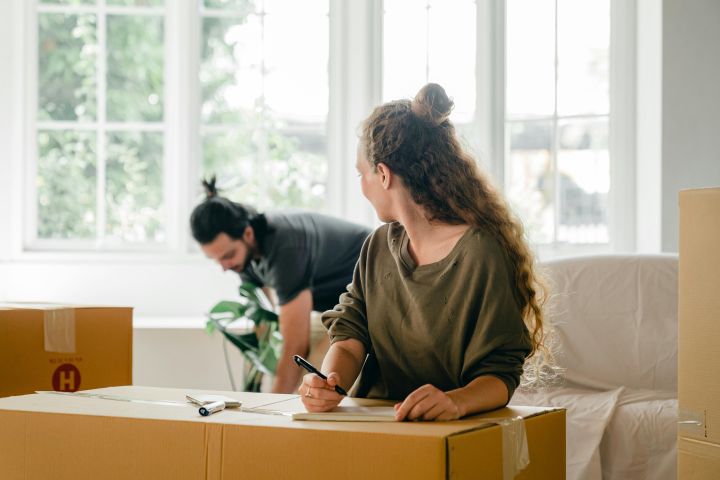 Source: Pexels
Source: Pexels
Moving into a new house brings forth opportunities as well as challenges. One of the challenges associated with the move is the transportation of garden plants. People choose to take plants along while moving for a variety of reasons including emotional attachment, economic value, specific preferences, starting a new garden with mature plants, time investments, and reduction of environmental impact. If you too intend to move soon along with the plants adorning your garden, the tips in this article will prove helpful.
An Overview of the Challenges
During transportation, plants are susceptible to physical damage due to jostling and their generally fragile structure. Some plants are more sensitive to environmental changes. They may be exposed to extreme temperatures during transit. Transporting plants also increases their vulnerability to new pests and diseases. If you’re moving across state or international borders, you will have to check for legal and regulatory requirements such as permits or inspections; such requirements are put in place due to the risk of the spread of invasive species and diseases.
You may struggle to maintain the right soil moisture level during a move when there are so many other things to handle. Moreover, the varying sizes and shapes of plants may make packing and placement in a vehicle difficult. Keeping them in closed boxes in vehicles like the rest of the items is not an option, as they require light for survival and growth. The biggest challenge is maintaining ideal conditions for the health and growth of your beloved and valuable plants during the move.
Before the Move
Begin the preparation to move with plants a few days before the actual moving process. Firstly, check the regulations if you’re moving to a different state or country. Secondly, inspect your plants for diseases and pests, and if you find anything, work on fixing that. Make the plants more manageable with pruning. You may need to move some plants from the ground to pots. If some of your plants are in fancy, delicate, and heavy pots, transfer them to some plastic unbreakable ones. Lastly, ensure that the plant soil is neither waterlogged nor dry just before the move.
Packing and Moving
You’ll need to pack different types of plants considering their varying requirements. What may benefit one type of plant may prove detrimental to another. Working according to plant categories will help ensure that your plants arrive at your new residence in a fairly safe condition:
Small Potted Plants
Use a sturdy box with the top open for the small potted plants. You can place multiple plants in one box if it is large enough. It’s even better if the box has compartments that can hold individual plants, or you could create makeshift compartments. Arrange the plants in the box, so that they are neither too close together nor too far apart. Add some cushioning material like bubble wrap, crumpled paper, or packing peanuts around the pots to prevent movement. You may need to cover the plants that have delicate foliage with plant sleeves or plastic bags that have holes for ventilation.
Trailing Plants
Roll up the vines into coils and separate each with a piece of paper to prevent them from getting entangled. Another option, for smaller vines, is to just wind them around the pots. Whichever method you choose, the next step is to place the plant either in a tote bag or a box with some padding. It’s best to avoid watering the plant for a day or two before moving and pack it last just before moving.
Tall Plants
Tall plants pose a much bigger challenge quite literally. But where there is a will, there is a way! You can use a long plastic bag with holes for the foliage; use another one for the pot and tie it around the trunk. Packing the plant in this way will prevent any soil from spilling over into your vehicle even if you have to lean the plant to make it fit. Support the plant with blankets, towels or bubble wrap around the base and along the trunk where it leans. To secure it further, you could use bungee cords, ropes, or belts.
During the moving process, you can use or repurpose good-quality hail netting to protect your plants from weather elements, deter pests and birds, and avoid displacement during transit.

After the Move: Setting up Your New Garden
If you plan and execute the transportation process well, your plants will arrive at your new abode in good condition. Once they have arrived, unpack them immediately and show them some love. Avoid leaving them in dark and unfavorable conditions for days while you’re busy unpacking other things. Spritz the plants to give them some moisture if they seem dry but avoid overwatering them. Allow your plants to acclimatize to their new environment for a few days before repotting or pruning them. In a few days, you and your plants will start feeling at home in the new environment. Set up your new garden and watch it bloom!
We hope you found this blog post Green Moving: How to Transport Your Garden Plants Safely useful. Be sure to check out our post Green Moving Tips – Eco Friendly Moving Guide for more great tips!

Have Experience in the Moving Industry? Want an Additional Income Stream? Work With All Around Moving!
Join our program! Put your experience in the moving industry and drive to good use. Profit as a moving consultant. Click here to learn more.




